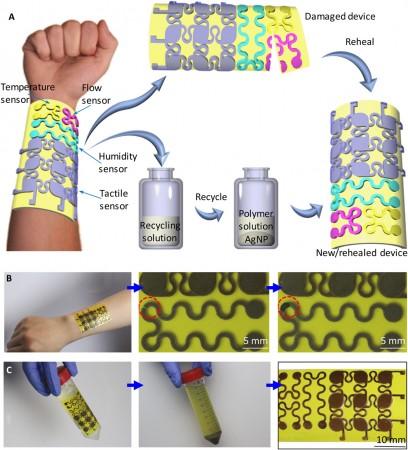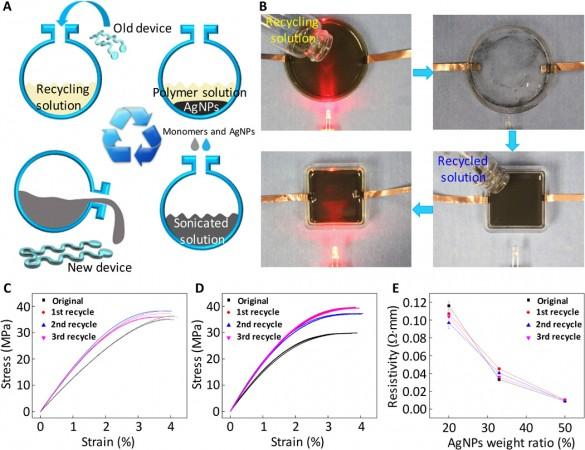
Scientists have come up with a solution to a major biomedical problem that amputees face: the inability to feel force, pressure and temperature on their prosthetic limbs. A newly-developed e-skin can do all these things and also heal itself, regaining its original properties after being damaged.
Experts hope to use this technology to create more "sensitive" robots and self-healing smartphones in the future.
Read more: Scientists use shark skin to develop structure that can help design better drones, planes
Researchers from the University of Colorado Boulder have developed a fully recyclable, malleable and self-healing electronic skin that can help make more advanced prosthetic limbs and even more "sensitive" robots.
Lead author of the study, Jianliang Xiao, is also hopeful that this technology can be used in future to create cellphones and laptops with self-healing properties, thereby reducing electronic waste.
The e-skin is thin, translucent and can imitate the functions of real skin. It has sensors that can measure temperature, pressure, airflow and humidity.
If this skin is utilized in prosthetics, the amputee will be able to feel the pressure they exert while holding an object, thus reducing the chances of accidentally breaking or dropping it.

"If you think about what real skin can do, real skin can prevent people from getting burned [and] can prevent people getting hurt," study author Wei Zhang from the University of Colorado Boulder told Newsweek. "E-skin can basically mimic those [preventive] functions. At least that's one big part of the electronic skin."
Apart from better prosthetics, this artificial skin can also aid in building better robots by giving robotic arms the ability to feel pressure and heat without exerting much stress. The study was published in the journal Science Advances.
"Let's say you wanted a robot to take care of a baby," Zhang told Newsweek. "In that case you would integrate e-skin on the robot fingers that can feel the pressure of the baby." The robot will also be able to tell if the baby is sick by feeling its temperature with one touch.
The electronic skin is made of a polymer called polyimine, along with silver nanoparticles that give strength, stability and electrical conductivity to the material. It also has the ability to wrap itself around objects easily.
According to Zhang, their main objective is to mimic the properties of a biological skin, while giving it the desired healing functions. The e-skin can reportedly be healed Terminator-style by soaking it into a special solution with recycling properties. The solution has the ability to make the e-skin regain its original powers.
The researchers wish to reduce environmental pollution due to electronic waste by making recyclable technology. According to estimates, the United States discards 30 million computers and Europe disposes of 100 million phones annually, of which only 15-20 percent is recycled, says the Environmental Protection Agency.









!['Had denied Housefull franchise as they wanted me to wear a bikini': Tia Bajpai on turning down bold scripts [Exclusive]](https://data1.ibtimes.co.in/en/full/806605/had-denied-housefull-franchise-they-wanted-me-wear-bikini-tia-bajpai-turning-down-bold.png?w=220&h=138)



